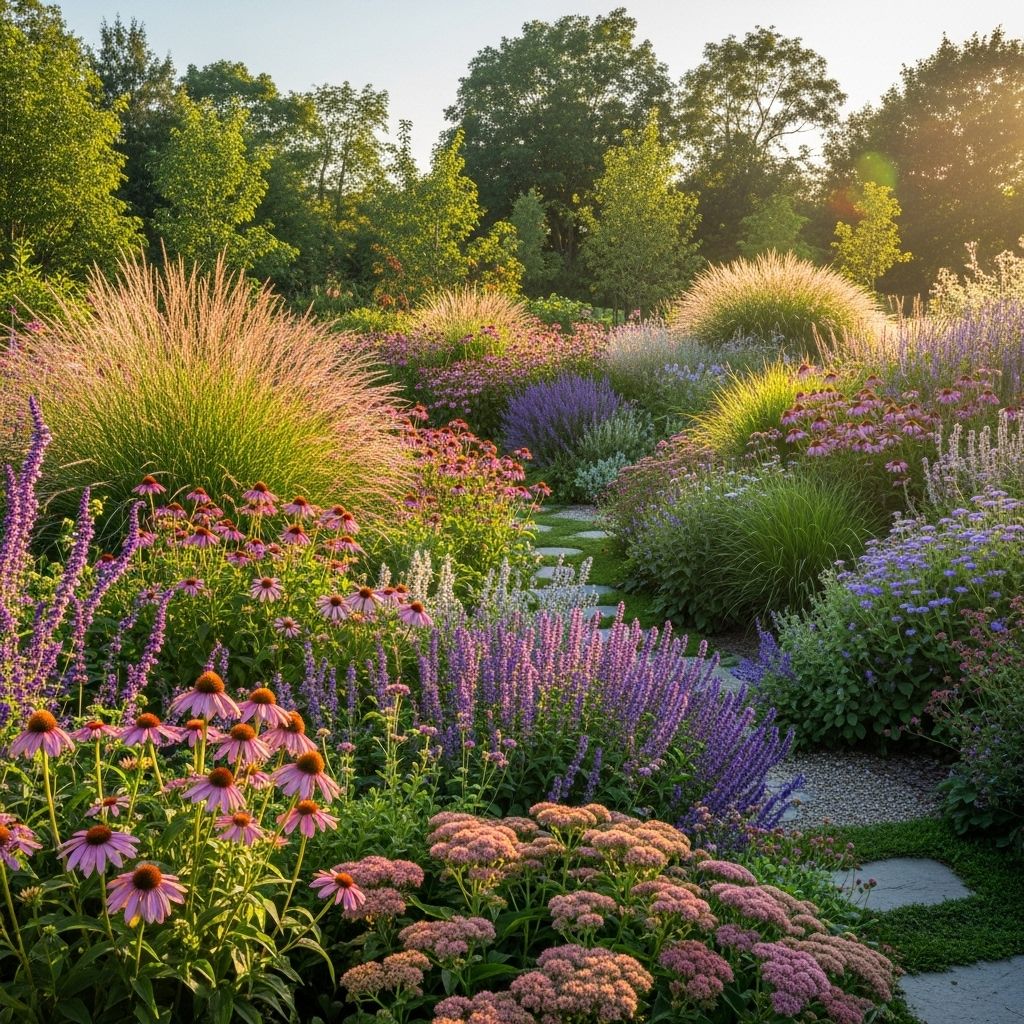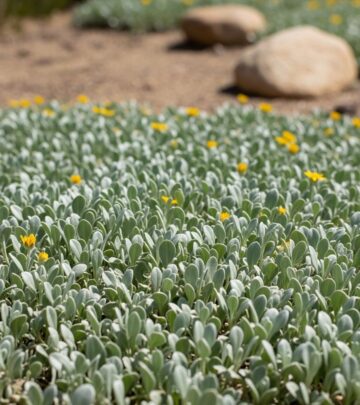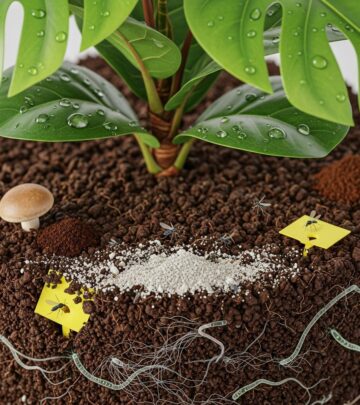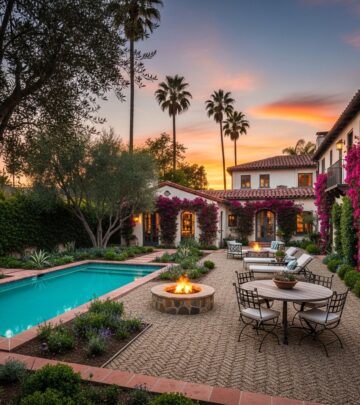Piet Oudolf Garden Design: 10 Perennial Ideas For Every Garden
Revolutionize your garden with timeless wisdom from the master of naturalistic planting design

Image: HearthJunction Design Team
In the world of garden design, few names carry as much weight as Piet Oudolf, the revolutionary Dutch designer who has transformed our understanding of what gardens can be. Born in 1944 in Haarlem, Netherlands, Oudolf has become the leading figure of the “New Perennial” movement, a gardening philosophy that embraces naturalistic plantings and celebrates the beauty of plants throughout their entire life cycle.
Since 1982, Oudolf has lived and worked in Hummelo, a tiny village in eastern Netherlands, where he started a nursery with his wife Anja to grow perennials. His garden has become renowned for its radical approach to planting design, emphasizing form, texture, and seasonal evolution over traditional color-focused schemes.
Today, Oudolf’s distinctive style can be seen in high-profile projects worldwide, including New York’s High Line, Chicago’s Lurie Garden, and London’s Serpentine Gallery. His work has revolutionized public spaces and private gardens alike with its ecological sensitivity and emotional resonance.
Let’s explore ten transformative garden ideas inspired by this master of naturalistic design that you can adapt to your own outdoor space.
1. Design with Plant Architecture in Mind
For Piet Oudolf, a plant’s structure is just as important as its flowers—if not more so. While traditional garden design often focuses exclusively on bloom color and flowering period, Oudolf’s approach prioritizes the overall form and architectural qualities of plants.
When selecting plants for your garden, look beyond the brief flowering period and consider the plant’s overall structure—its height, shape, and how it holds itself throughout the seasons. Choose perennials with strong architectural forms that maintain their presence even after flowering has finished. Grasses with distinctive seed heads, like Calamagrostis x acutiflora ‘Karl Foerster’, or perennials with strong vertical elements, such as Veronicastrum virginicum, provide structure and visual interest that lasts well beyond the blooming season.
This architectural approach ensures your garden remains visually compelling throughout the year, not just during peak flowering times. The strong silhouettes of carefully chosen plants create a captivating landscape even in winter, when frost and snow highlight their structural elements.
2. Embrace the Entire Life Cycle of Plants
One of Oudolf’s most revolutionary concepts is appreciating the beauty of plants throughout their entire life cycle—including decay. While conventional gardening often views spent flowers and browning foliage as something to be promptly removed, Oudolf sees these changes as part of the garden’s evolving aesthetic.
Rather than deadheading every faded bloom, allow seed heads and dried stalks to remain standing through fall and winter. Plants like Echinacea, Sedum, and ornamental grasses develop striking seed heads and structures that add winter interest and provide food for birds and wildlife. The subtle colors of dried stems and seed heads—tans, russets, and silvers—create a rich visual tapestry during the dormant season.
By embracing this approach, your garden becomes a dynamic entity that changes with time rather than a static display. This perspective also reduces maintenance work and creates valuable habitat for wildlife during the colder months.
3. Use Repetition for Cohesive Design
Repetition is a fundamental principle in Oudolf’s design philosophy. By repeating specific plants or plant combinations throughout a garden, he creates a sense of rhythm and coherence that guides the eye and unifies the space.
In your own garden, identify a few signature plants that perform well in your conditions and use them repeatedly as anchoring elements. This doesn’t mean creating identical arrangements everywhere—rather, it’s about establishing visual connections between different areas of the garden. For example, you might use the same ornamental grass variety in several locations, but pair it with different flowering perennials in each spot.
This technique is particularly effective in larger gardens where repetition helps create a sense of intentionality and prevents the space from feeling chaotic or disconnected. Even in smaller gardens, repeating key plants can make the design feel more sophisticated and purposeful.
4. Design in Drifts and Interlocking Plant Communities
Oudolf typically arranges plants in naturalistic drifts and intermingling groups rather than formal blocks or isolated specimens. This approach mimics how plants grow in natural ecosystems, creating a more organic feel while allowing different species to support and complement each other.
When planning your garden, think in terms of plant communities rather than individual specimens. Group compatible plants that share similar growing requirements but offer contrasting forms, textures, or flowering times. Allow these groupings to flow into one another with soft, irregular boundaries rather than strict dividing lines.
This interlocking approach creates gardens that feel simultaneously wild and intentional. It also offers practical benefits: plants growing in communities often support each other structurally and help suppress weeds by covering the soil completely.
5. Focus on Year-Round Visual Interest
Oudolf designs gardens to provide visual interest in every season, not just during peak flowering periods. This approach ensures the garden remains compelling throughout the year and develops a narrative that unfolds over time.
To achieve this in your own garden, select plants with different seasonal highlights: spring bloomers, summer flowers, fall color, and winter structure. Include plants valued for their foliage rather than just their flowers, as leaves often provide longer-lasting interest. Incorporate grasses that come into their own in late summer and fall when many flowering perennials are fading.
This four-season approach transforms your garden from a temporary display into an evolving landscape that rewards attention year-round. Even in the depths of winter, there should be something to appreciate—whether it’s the silhouette of dried seed heads or the texture of ornamental grass plumes caught in frost.
6. Prioritize Texture and Form Over Color
While many conventional gardens are designed primarily around color schemes, Oudolf considers color somewhat secondary to form and texture. This prioritization ensures gardens maintain visual interest even when not in bloom.
When selecting plants, pay attention to leaf shapes, surface textures, and growth habits. Contrast fine-textured plants like grasses with bold-leaved specimens such as Rodgersia or Baptisia. Juxtapose vertical forms against mounding shapes and airy, transparent plants against more solid blocks of vegetation.
This texture-focused approach creates gardens with subtle sophistication and depth that reward close observation. While color certainly plays a role in Oudolf’s designs, it’s the interplay of different forms and textures that gives his gardens their distinctive character and ensures they remain interesting even in monochromatic seasons.
7. Create Emotional Landscapes
For Oudolf, gardens are not just visual experiences but emotional ones. “For me, garden design isn’t just about plants, it is about emotion, atmosphere, a sense of contemplation,” he has said. “You try to move people with what you do.”
To create this emotional resonance in your own garden, think beyond purely aesthetic considerations to how different spaces make you feel. Consider creating areas that evoke specific moods—perhaps a secluded, enclosed space for reflection, or an open, expansive planting that inspires a sense of freedom.
The emotional impact of a garden often comes from its overall atmosphere rather than individual plants. Pay attention to the garden’s rhythm and pace, creating moments of drama and excitement balanced with areas of calm and simplicity. This emotional dimension transforms a collection of plants into a meaningful landscape that resonates with visitors on a deeper level.
8. Incorporate Sustainable Practices
Sustainability is inherent in Oudolf’s approach to garden design. By working with nature rather than against it, his gardens require less intervention and fewer resources to maintain their beauty.
Adopt these sustainable practices by selecting plants well-suited to your local conditions rather than fighting your site. Group plants with similar water needs together, minimize chemical inputs, and implement strategies like deep mulching to reduce watering requirements. Allow fallen leaves to remain in planting beds as natural mulch and fertilizer.
This ecological sensitivity not only reduces maintenance but creates gardens that function as living ecosystems supporting wildlife and improving environmental health. Sustainable gardens develop more character and resilience over time as plants establish and find their place within the community.
9. Balance Structure with Spontaneity
Oudolf’s gardens strike a masterful balance between careful planning and natural spontaneity. While the overall framework is precisely designed, there’s room within this structure for plants to self-seed, shift, and evolve over time.
In your garden, establish a strong underlying structure through permanent elements like paths, hedges, or larger shrubs and trees. Within this framework, allow for some flexibility in how perennials and grasses develop and interact. This might mean tolerating (or even encouraging) some self-seeding or allowing certain plants to expand beyond their initial boundaries if the effect is pleasing.
This balance between control and spontaneity creates gardens that feel both cohesive and natural—designed but not overly manicured. The resulting landscape has a sense of authenticity that purely decorative gardens often lack.
10. Design for Evolution, Not Perfection
Perhaps most importantly, Oudolf designs gardens with time and change in mind. Rather than striving for an instantly perfect but static display, his gardens are intended to evolve and develop character as they mature.
Adopt this patient, long-term perspective in your own garden. Understand that newly planted gardens will take time to reach their full potential, and that the landscape will change—sometimes in unexpected ways—as plants grow, compete, and respond to environmental conditions. Be willing to adjust your vision based on how plants perform and interact in your specific conditions.
This evolutionary approach creates gardens with depth and authenticity that can’t be achieved through instant landscaping. By designing with time as a partner rather than an enemy, you’ll create a garden that improves with age and tells a continuing story rather than delivering a one-time spectacle.
Frequently Asked Questions
Q: What exactly is the “New Perennial” movement that Piet Oudolf pioneered?
A: The New Perennial movement is a garden design approach that emphasizes naturalistic plantings using perennials and grasses arranged in communities that mimic natural ecosystems. It focuses on plant structure and form rather than just flowers, embraces seasonal change including decay, and prioritizes ecological sensitivity over formal decorative displays.
Q: Do I need a large space to implement Oudolf-inspired design principles?
A: While many of Oudolf’s most famous projects are large-scale public spaces, his design principles can be adapted to gardens of any size. Even a small urban garden or balcony can incorporate his focus on plant structure, seasonal interest, and naturalistic combinations. In smaller spaces, you might simply use fewer varieties but still arrange them in naturalistic drifts rather than formal patterns.
Q: Are Oudolf-style gardens high maintenance?
A: When properly designed for local conditions, Oudolf-style gardens can actually require less maintenance than conventional gardens. By using plants adapted to your climate and grouping them in communities, you’ll reduce the need for watering, fertilizing, and pest control. The main maintenance comes in late winter when dried stalks and seed heads are cut back before new growth emerges.
Q: What are some signature plants often used in Oudolf designs?
A: Oudolf frequently works with ornamental grasses like Molinia, Panicum, and Sporobolus; perennials with strong architectural qualities such as Echinacea, Eryngium, and Veronicastrum; and plants with long-lasting seed heads including Phlomis and Monarda. However, he adapts his plant palette to each location’s specific conditions rather than using the same plants everywhere.
Q: How can I learn more about Piet Oudolf’s design approach?
A: Oudolf has co-authored several books that detail his design philosophy and techniques, including “Planting: A New Perspective” and “Landscapes in Landscapes.” The documentary “Five Seasons: The Gardens of Piet Oudolf” provides visual insight into his process. Visiting his public projects, such as the High Line in New York or the Lurie Garden in Chicago, offers firsthand experience of his work.
References
Read full bio of Shinta












